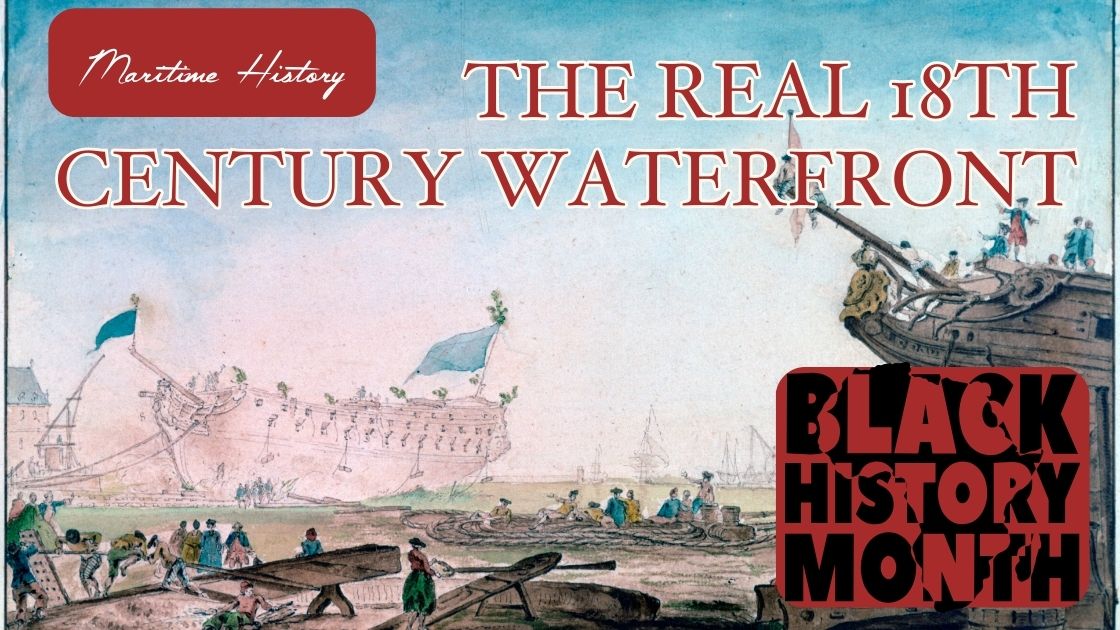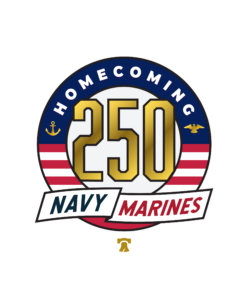
27 Feb The Real 18th Century Waterfront
This week in the finale of our #TallShipTuesday Black History Month series, we learn all about the real 18th century waterfront and how colorful it really was and why. We want to particularly highlight the Continental Navy and the fact that as many as one in five members of the Continental Navy were African American.

The Continental Navy vs. Continental Army
When it came to the Royal Navy, American State Navies, the Continental Navy, and even just on merchant ships, you could bet several African Americans had a hand from ship to shore. In fact, this is one reason that the Continental Navy was more diverse with over 10% of the population being made up of African Americans. In the Continental Army, black soldiers made up potentially only 3.63% of soldiers, though some sources put it higher. Additionally, there were black sailors in state navies, and that served as privateers and fought outside the Continental Navy as well. But why choose to fight for the Americans instead of the British?
Why Fight for the Americans?
African Americans joined on these Continental Navy ships for a variety of reasons. In the age of sail, many black men worked along the 18th century waterfront. Many had sailing experience. Many had sailed before with the Royal Navy, state navies, merchant ships, ferry services, and more. Unfortunately, slavery made it more common that African Americans would be working on the waterfront. They would do everything from shipbuilding, carpentry, and sailing vessels of various sizes. This was considered piloting rather than captaining a ship due to their station.
In this context, “piloting” meant that the Black sailors would be in acting as the captain of a ship for short periods of time without a formal title. By taking those skills and using them in the revolutionary war, many enslaved people were able to work for their freedom in many cases and improve their station in life. The sea was one way that Black folks were able to escape slavery and build a new life.
They joined these naval crews oftentimes knowing that at sea, they would be considered a part of the crew before much else. They did often have more menial tasks on the ship, but they had opportunities to work up to more important roles. And they also would receive comparable pay for their rank and station compared to their white counterparts. If a Black man were enslaved fighting on a ship though, their owner would have stolen their pay instead.
Fighting for Freedom… but who was free?
Some African Americans who served on Continental Navy ships were free while others were still enslaved. We have record of these Black sailors in the Continental Navy from passages like this in captains’ logs. This one that was quoted by The Sextant comes from Captain James Barron of Liberty: “I take pleasure in stating there were several coloured men, who, I think, in justice to their merits should not be forgotten. Harry (a slave, belonging to Captain John Cooper) was distinguished for his zeal and daring; Cupid (a slave of Mr. William Ballard) stood forth on all occasions as the champion of liberty, and discharged all his duties with a fidelity that made him a favorite of all the officers.”

Unlike the Continental Army, which had a period of banning Black soldiers and sometimes had segregated regiments, the Continental Navy was mostly integrated. While integrated though, according to the article, The Negro Soldier in the American Revolution, most of those that fought for Americans were enslaved, but that “there were slaves who, finding it easier to take occasional chances with bullets than to bear the lash, ran away from their masters and served as privateers or enlisted as freemen.” At sea, there was less of a distinction between free and slave, but those that were held captive did have the opportunity to work towards freedom, though this was not necessarily guaranteed.
Fighting for the British
Some Black sailors served for the British during the war. In Virginia, Royal Governor John Murray, the fourth Earl of Dunmore was concerned over rising tensions in the colonies. By late 1775, it had progressed to the point that the Continental Navy had been formed. They were preparing to come after Lord Dunmore’s fleet in the Chesapeake. In a move to weaken rebels Dunmore wrote a proclamation. “I do hereby further declare all indented Servants, Negroes, or others, (appertaining to Rebels,) free that are able and willing to bear Arms, they joining His MAJESTY’S Troops as soon as may be, for the more speedily reducing this Colony to a proper Sense of their Duty …” With a true promise of freedom, it wasn’t hard to bring black Americans to the Royal Navy. Before long, Dunmore had created the “Ethiopian Regiment” to fight the Americans.
Notable Black Sailors of the 18th Century Waterfront

Notable Black sailors in the 18th century included Caesar Tarrant. He was a pilot for 4 years. In 1789 Tarrant was freed due to his military service by the Virginian government. James Forten, a sailmaker and abolitionist, was one of the most famous Black sailors in the 18th century. Then there is “Captain” Mark Starlin who fought in the Virginia Navy throughout the American Revolution. Starlin most notably served on schooner Patriot. When he returned from the war, instead of being heralded as a hero, he was instead, once again enslaved.
Black Jacks: African American Seaman in the Age of Sail- https://www.jstor.org/stable/j.ctv19m61bs
Naval History and Heritage Command- The African American Experience in the US Navy- https://www.history.navy.mil/browse-by-topic/diversity/african-americans/chronology.html
10 facts: Black Patriots in the American Revolution- https://www.battlefields.org/learn/articles/10-facts-black-patriots-american-revolution
Blacks on the Waterfront- https://redhookwaterstories.org/exhibits/show/blacks-on-the-waterfront/blacks-waterfront-american-rev
National Parks Service- From Slaves to Seaman: Seeking Freedom- https://www.nps.gov/safr/blogs/from-slaves-to-seamen-seeking-freedom-part-1-of-2.htm#:~:text=They%20also%20worked%20on%20ships,work%20as%20crew%20aboard%20ships.
A History of Piloting and Pilots- https://dem.ri.gov/sites/g/files/xkgbur861/files/programs/bnatres/enforce/pdfs/history.pdf
Black Pilots, Patriots, and Pirates- https://scholarworks.wm.edu/cgi/viewcontent.cgi?article=5821&context=etd
Black Soldiers and Sailors in the Revolutionary war- https://www.amrevmuseum.org/big-idea-2-black-soldiers-and-sailors-in-the-revolutionary-war
James Barron of Liberty– https://usnhistory.navylive.dodlive.mil/Recent/Article-View/Article/2686744/americas-first-black-sailors/
The Negro Soldier in the American Revolution- https://www.journals.uchicago.edu/doi/pdf/10.2307/3035634
Lord Dunmore’s Ethiopian Regiment- https://www.battlefields.org/learn/articles/lord-dunmores-ethiopian-regiment
Pilot of the Patriot- https://www.colonialwilliamsburg.org/learn/deep-dives/pilot-patriot/
James Forten- https://pabook.libraries.psu.edu/forten__james
“Captain” Mark Starlin- https://www.aaihs.org/black-patriotism-and-black-death-in-the-aftermath-of-the-american-revolution/




Sorry, the comment form is closed at this time.